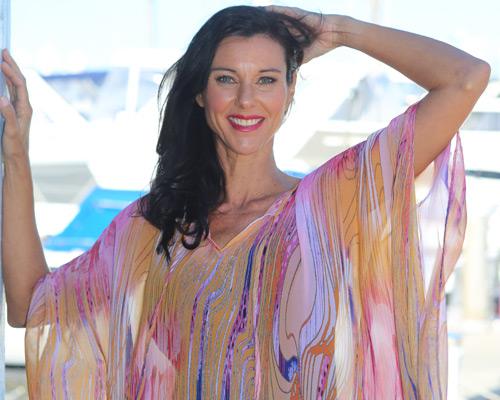Your Cart is Empty
Free domestic shipping for orders over $50 | Afterpay | Zippay | Easy Returns
Once upon a time, there was a beautiful Empress named Hsi Ling Shi (the wife of the mythical Yellow Emperor). One day, while sipping tea under a mulberry tree, a cocoon fell into her cup and began to unravel. The Empress became so captivated with the shimmering thread, she discovered the source, the Bombyx Mori silkworm. The Empress soon developed sericulture, the cultivation of silkworms, and invented the reel and loom.
Like any legend, we cannot know for sure how accurate this story is, however we can be certain the earlier records of silk history and its production trace back to China, and that for nearly 3 millennia, the Chinese had a global silk production. In this week’s blog post we wanted to introduce to you briefly the enchanting history behind one of the gorgeous fabrics used here at Laloom.
Though first reserved for Chinese royalty, silk spread gradually through the Chinese culture both geographically and socially. The Chinese realised the value of the beautiful material they were producing and kept its secret safe from the rest of the world for more than three thousand years. Travellers were searched thoroughly at border crossings and anyone caught trying to smuggle eggs, cocoons or silkworms out of the country were executed. But China’s monopoly over Silk was not to last, and by around CE 300, sericulture had spread into India, Japan, and Persia – thus making silk a part of the history of these cultures.
Demand for this exotic fabric eventually created the lucrative trade route now known as the Silk Road, taking silk westward and bringing gold, silver, and wools to the East. It was named the Silk Road after its most valuable commodity – silk was considered even more precious than gold!
“The Silk Road, or Silk Route, is a name given to an interconnected series of trade routes through various regions of the Eurasian continent mainly connecting Chang’an (today’s Xi’an) in China, with Asia Minor and the Mediterranean. It extends over 8,000 km (5,000 miles) on land and sea.”
 Photo by: Ganapathy Kumar on Unsplash
Photo by: Ganapathy Kumar on Unsplash
In Europe, silk was much sought after. Beginning with Rome the import of Chinese silk resulted in vast amounts of gold leaving the empire to purchase. The new shimmer and shape of women’s clothes began to attract attention.
Deigned by some at the time as indecent and immoral, eventually (and also inevitably) Europe began to produce silken materials themselves, first in Italy, Sicily and Spain.
“Silk does for the body what diamonds do for the hand” – Oscar de la Renta
With such a rich history behind it, here are just a few reasons why this fabric has endured for so many centuries, why Laloom loves producing garments using it and why we know you will love Silk too (if you don’t already):
Flattering –Silk kaftan dresses flow and drape on the body to compliment any figure. Women throughout history have coveted its way of moulding the body in elegance but still in modesty.
All-climate fabric – Silk is warm and cosy in winter and comfortably cool when temperatures rise. Its natural temperature-regulating properties give silk this paradoxical ability to cool and warm simultaneously. Silk garments thus outperform other fabrics in both summer and winter. Silk worn as a second layer warms without being bulky. Worn in all countries silk is a truly international fashionable item.
Absorbent – Silk is highly absorbent, it can absorb up to 30% of its weight in moisture without feeling damp. Silk will absorb perspiration while letting your skin breathe.
Hypoallergenic – Silk’s natural protein structure contains Sericin, an anti-acarid property that prevents the growth of acarids and mold, making it the best choice for skin allergies.
Light-reflective – Because of the triangular structure of its filament, it makes colours printed on silk particularly vibrant. Its luxurious feel, lustre and ability to capture colour have inspired artists throughout history – and it inspires us too.
Robust – Despite its delicate appearance, its smooth surface resists soil and odours well. Silk is wrinkle and tear resistant and dries quickly.



